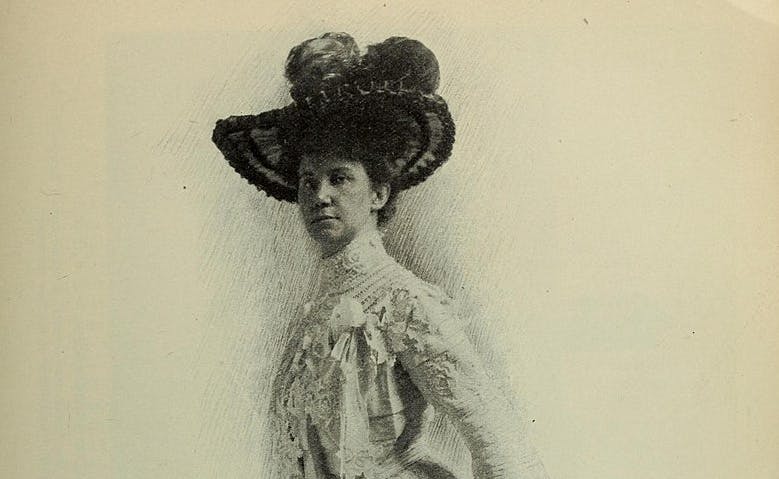Unraveling the Mysteries of a True-Life Mystery Story Writer, Carolyn Wells
Rebecca Rego Barry has written what might be called a process biography, one in which she includes us in her search for the life that began in what Wells herself called unremarkable Rahway, New Jersey.

‘The Vanishing of Carolyn Wells’
By Rebecca Rego Barry
Post Hill Press, 256 pages
A student asked William Faulkner at the University of Virginia: “Why is it that Mississippi seems so very active in a literary way, and yet we don’t find the same phenomenon in New Jersey?” Faulkner explained: “That’s because Mississippi is in the South and New Jersey’s in the North.” Defeated in war and needing federal handouts, Southerners had a lot of time to write, he observed.
Behind such questions is the larger query about why certain writers last and others are forgotten almost as soon as they die, vanishing like Carolyn Wells (1862-1942), a New Jersey author who wrote something like 160 books, half of them popular mysteries that rivaled the work of later standouts like Agatha Christie and Dorothy Sayers. Wells was important enough to be invited to Mark Twain’s 70th birthday celebration, which begins this biography.
Rebecca Rego Barry has written what might be called a process biography, one in which the biographer includes us in her search for the life that began in what Wells herself called unremarkable Rahway, New Jersey, where she worked as a librarian until the age of 40 — when she embarked on a prolific career writing mystery stories, amusing limericks, children’s books, and working in just about every literary genre.
I sampled Ms. Wells’s first Fleming Stone mystery, “The Clue,” set in a wealthy New Jersey mansion. Several amateur detectives in a wedding party are stymied in trying to figure out which one of them murdered an heiress the night before she was to be married. With no evidence of a break-in visible in the well-locked house, the coroner assents to calling in the professional detective, Fleming Stone.
Wells diverted me, managing the plot mechanics masterfully, with believable characters. Fleming Stone’s entrance is delayed so long that the tension mounts, and rather like Sherlock Holmes, one of Wells’s favorites, Stone reads the room and through expertly handled interviews and keen observations deduces how the crime was committed and who did it, and why, by creating a scene in which the murderer feels compelled to confess.
I like to imagine Faulkner, who loved to read cheap paperback mysteries, walking into the drugstore, as he liked to do at Oxford, Mississippi, to pick off the rack the latest Fleming Stone title — except he could not do so, as Wells died in 1942, just before the paperback revolution, and her publishers failed to put her back into print.
Thus Ms. Barry argues that certain writers last not only because their work is of high quality but because of who is paying attention — library archives, publishers, scholars, family members, and literary executors. In Wells’s case, the institutions of literary longevity let her down and fellow authors did little to foster her legacy. She also let herself down by not carefully managing her literary estate.
It is a pleasure to watch Ms. Barry at work, creating her own detective story and much suspense as she writes to booksellers, examines the inscriptions in Wells’s books strewn around the country, draws on the research of scholars like Margaret Stetz at the University of Delaware, and interviews a few Wells family members who have remnants of her possessions and a few dim memories of her.
A bit of poetry and prose shows Wells’s gift for limerick, satire, and parody:
A scholarly person named Finck
Went mad in the effort to think
Which were graver misplaced,
To dip pen in his paste,
Or dip his paste-brush in the ink.
A Henry James translation of the limerick via Carolyn Wells:
She luminously wavered, and I tentatively inferred that she would soon perfectly reconsider her not altogether unobvious course. Furiously, though with a tender, ebbing similitude, across her mental consciousness stole a re-culmination of all the truths she had ever known concerning, or even remotely relating to, the not-easily fathomed qualities of paste and ink. So she stood, focused in an intensity of soul-quivers, and I, all unrelenting, waited, though of a dim uncertainty whether, after all, it might not be only a dubitant problem.
Carolyn Wells is fun to read — even if she is from New Jersey.
Mr. Rollyson is the editor of “Critical Survey of Mystery and Detective Fiction,” revised edition in five volumes.

